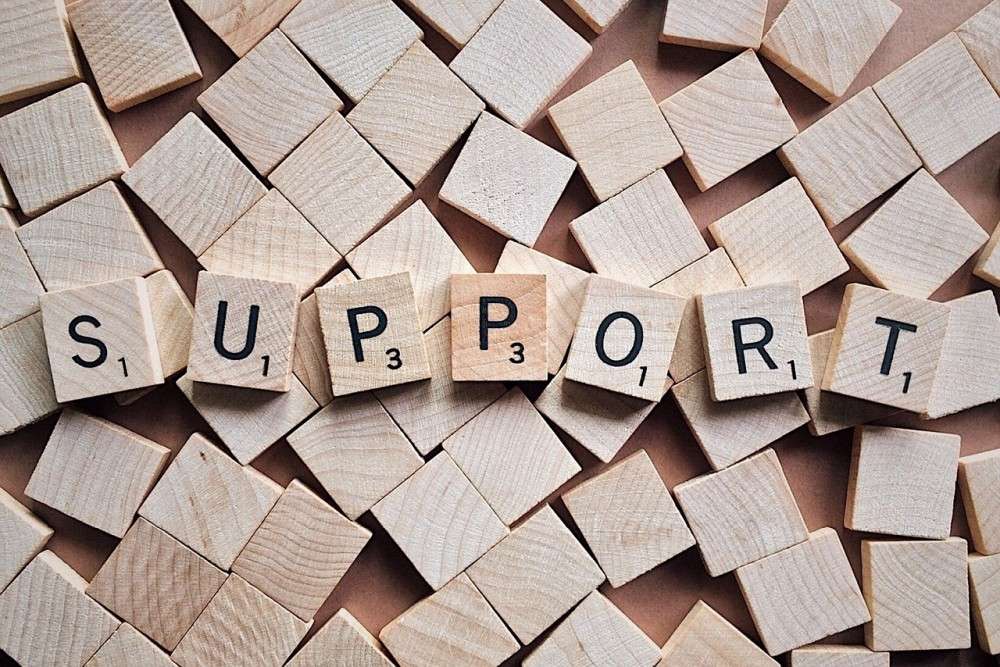In the fast-paced world of hospitality and dining, having the right skills in food and beverage service is essential. Whether you’re a seasoned professional or just starting your career in this industry, honing these skills can make all the difference. This article will delve into the nuances of food and beverage service, from understanding the basics to mastering customer interactions and handling challenging situations.
1 What is Food and Beverage Service?
A. Defining the Role
Food and beverage service is the process of preparing and delivering food and drinks to customers in a dining establishment. It encompasses various tasks, from taking orders and serving meals to maintaining the dining area’s cleanliness and ensuring a positive customer experience.
B. Importance in the Hospitality Industry
Food and beverage service plays a pivotal role in the hospitality industry. It directly impacts customer satisfaction, repeat business, and the establishment’s reputation. In essence, it’s the frontline of the hospitality experience, setting the stage for memorable dining moments.
Real-Life Scenario: A Day in the Life of a Food and Beverage Server
To illustrate the importance of food and beverage service, let’s consider a typical day in a bustling restaurant. Imagine a server named Sarah working at a popular bistro. Here’s how her day unfolds:
| Time | Task |
|---|---|
| 8:00 AM | Arrives at the restaurant, prepares the station |
| 9:00 AM | Greets the first customers, takes their orders |
| 10:30 AM | Serves breakfast and ensures tables are clean |
| 1:00 PM | Handles a busy lunch rush with efficiency |
| 3:30 PM | Assists in restocking supplies and beverages |
| 7:00 PM | Takes dinner orders, provides menu recommendations |
| 9:00 PM | Manages multiple dessert orders, checks on tables |
| 11:00 PM | Wraps up the shift, ensures the area is tidy |
Sarah’s role involves much more than taking orders and serving food; it’s about creating a seamless dining experience that leaves customers satisfied and eager to return.
2 What Skills Do You Need for Food and Beverage Service?
Food and beverage service demands a diverse set of skills that go beyond carrying plates and pouring drinks. Let’s explore the key skills you need to excel in this industry.
A. Essential Soft Skills
- Communication: Effective communication is the cornerstone of good service. Servers must listen to customers’ needs, convey menu information clearly, and interact politely.
- Adaptability: Restaurants can be unpredictable. Being able to adapt to changing situations, like handling a sudden rush, is crucial.
- Empathy: Understanding and empathizing with customers’ preferences and concerns can enhance their experience.
- Teamwork: Collaboration with kitchen staff and fellow servers ensures smooth service.
- Attention to Detail: Getting orders right and noticing small details, like refilling water glasses, makes a big difference.
B. Technical Proficiency
- Menu Knowledge: Familiarity with the menu, including ingredients and preparation methods, helps answer customer questions.
- Table Setting: Properly setting tables and arranging utensils contributes to the overall ambiance.
- Wine and Beverage Knowledge: If serving alcohol, knowing wine pairings and cocktail recipes is valuable.
- POS Systems: Proficiency in point-of-sale systems for order entry and payment processing.
C. The Art of Multitasking
- Balancing Act: Servers often handle multiple tables simultaneously, requiring excellent multitasking skills.
- Time Management: Prioritizing tasks and delivering orders promptly is essential.
List of Skills Required
Here’s a summarized list of skills essential for food and beverage service:
| Soft Skills | Technical Proficiency | Multitasking |
|---|---|---|
| – Communication | – Menu Knowledge | – Balancing Act |
| – Adaptability | – Table Setting | – Time Management |
| – Empathy | – Wine and Beverage | |
| – Teamwork | – POS Systems | |
| – Attention to Detail |
Mastering these skills is key to providing exceptional service in the food and beverage industry.
Learn Online Certified Restaurant Skills
Want to find a better job or want to manage a Restaurant? If yes, then you should Enroll for our expert vetted Online Certification Restaurant Skill Course below.
3 What is Customer Service in Food and Beverage Service?
Customer service is the heart of food and beverage service. It goes beyond simply taking orders and delivering food; it’s about creating memorable experiences that leave customers satisfied and eager to return.
A. Building Rapport with Customers
Establishing a positive rapport with customers is essential. Servers should greet guests warmly, engage in friendly conversation, and make them feel valued.
B. Handling Special Requests
Customers often have unique preferences and dietary restrictions. Being able to accommodate special requests, such as vegan or gluten-free options, demonstrates a commitment to excellent service.
C. Ensuring Customer Satisfaction
Customer satisfaction is the ultimate goal. Servers should check in on diners, address any concerns promptly, and ensure meals meet expectations.
Real-Life Scenario: Going the Extra Mile for Customer Delight
Consider a scenario where a couple celebrates their anniversary at a fine-dining restaurant. The server, Emily, notices the occasion and takes the following actions:
- Warm Greeting: Emily welcomes the couple with a heartfelt “Happy Anniversary!” and presents them with a personalized dessert menu featuring a congratulatory message.
- Attentive Service: Throughout the meal, Emily discreetly ensures that their glasses are never empty, offers menu suggestions, and checks if they need anything else.
- Surprise Dessert: As the couple finishes their main course, Emily brings out a beautifully plated dessert with a lit candle. The couple is surprised and deeply appreciative of the gesture.
Emily’s exceptional customer service not only enhances the couple’s dining experience but also creates a lasting memory, ensuring they’ll return to the restaurant in the future.
4 Common Types of Drinks Served During Food and Beverage Service
In the world of food and beverage service, drinks are just as important as the food itself. Here, we’ll explore the common types of beverages that servers often encounter.

A. Alcoholic Beverages
Alcoholic drinks are a significant part of many dining experiences. These can include:
- Wine: Red, white, sparkling, and dessert wines.
- Beer: An array of beers, from lagers to ales.
- Cocktails: A wide variety of mixed drinks, each with its own unique ingredients and presentation.
B. Non-Alcoholic Options
For non-drinkers or those who prefer to abstain from alcohol, non-alcoholic beverages are a must. These include:
- Soft Drinks: Carbonated beverages like cola, lemon-lime soda, and more.
- Mocktails: Non-alcoholic versions of cocktails, often with creative flavors.
- Water: Still or sparkling, water is a staple at every table.
C. Specialty Drinks
Some establishments offer specialty drinks that are unique to their menu. These can include:
- House Cocktails: Signature cocktails created by the restaurant’s mixologists.
- Fresh Juices: Made-to-order juices from a variety of fruits and vegetables.
- Coffee and Tea: A selection of hot and cold caffeinated beverages.
Table: Popular Beverage Choices
Here’s a table summarizing the most common beverage choices in food and beverage service:
| Beverage Type | Examples |
|---|---|
| Alcoholic Beverages | – Red Wine |
| – Beer | |
| – Margarita | |
| Non-Alcoholic Options | – Soft Drinks |
| – Virgin Mojito | |
| – Bottled Water | |
| Specialty Drinks | – House Specialty Cocktail |
| – Freshly Squeezed Orange Juice | |
| – Cappuccino |
Knowing the types of drinks and their characteristics is crucial for servers, as they often assist customers in making beverage choices that complement their meals.
5 How Should You Take Orders in Food and Beverage Service?
Taking orders effectively is a fundamental skill in food and beverage service. It ensures that customers receive the dishes they desire accurately and in a timely manner.
A. Order-Taking Etiquette
- Be Attentive: Listen carefully to customers’ requests without interrupting.
- Repeat Orders: Repeat the order back to the customer to confirm accuracy.
- Ask Questions: Clarify any special requests or dietary restrictions.
- Use Polite Language: Maintain a courteous tone and address customers respectfully.
B. Using Order Forms and Technology
Many restaurants use order forms or digital devices for order entry. Servers should be proficient in these systems to minimize errors.
C. Accuracy Matters
Ensuring the accuracy of orders is paramount. Mistakes can lead to customer dissatisfaction and complicate kitchen operations.
Table: Order-Taking Tips
Here are some practical order-taking tips for servers:
| Tip | Description |
|---|---|
| – Be Attentive | Listen actively to customer orders without interruptions. |
| – Repeat Orders | Repeat the order to the customer for confirmation. |
| – Ask Questions | Clarify special requests or dietary restrictions. |
| – Use Polite Language | Maintain a respectful tone and address customers politely. |
| – Learn the Menu | Familiarize yourself with the menu to provide information. |
| – Be Organized | Keep order forms or digital devices well-organized. |
| – Double-Check Orders | Ensure orders are accurate before submitting them. |
6 Common Dietary Restrictions in Food and Beverage Service
Customers have diverse dietary needs and restrictions, and it’s crucial for servers to be aware of them to provide safe and satisfying dining experiences.
A. Allergies and Intolerances
- Food Allergies: Some customers may be allergic to common ingredients like nuts, shellfish, or dairy. Cross-contamination must be avoided.
- Lactose Intolerance: Customers with lactose intolerance may request dairy-free alternatives.
B. Dietary Preferences
- Vegetarian: Vegetarians avoid meat and may prefer plant-based options.
- Vegan: Vegans abstain from all animal products, including dairy and eggs.
- Gluten-Free: Some individuals have gluten intolerance or celiac disease and require gluten-free options.
C. Religious Dietary Restrictions
- Halal: Halal dietary restrictions follow Islamic law, specifying foods and preparation methods.
- Kosher: Kosher dietary laws dictate what is permissible in Jewish cuisine.
Table: Dietary Restrictions Reference
Here’s a quick reference table for common dietary restrictions:
| Dietary Restriction | Description |
|---|---|
| – Food Allergies | – Allergic reactions to specific ingredients. |
| – Lactose Intolerance | – Difficulty digesting lactose in dairy products. |
| – Vegetarian | – Avoidance of meat. |
| – Vegan | – Abstaining from all animal products. |
| – Gluten-Free | – Gluten intolerance or celiac disease. |
| – Halal | – Dietary laws following Islamic guidelines. |
| – Kosher | – Dietary laws in Jewish cuisine. |
Being knowledgeable about these dietary restrictions ensures that servers can recommend suitable menu items and address customer concerns effectively.
Learn Online Certified Restaurant Skills
Want to find a better job or want to manage a Restaurant? If yes, then you should Enroll for our expert vetted Online Certification Restaurant Skill Course below.
7 The Importance of Hygiene in Food and Beverage Service
Hygiene is a non-negotiable aspect of food and beverage service. Ensuring cleanliness and food safety is essential to protect customers and maintain the restaurant’s reputation.
A. Food Safety Regulations
- Servers should be familiar with local health codes and regulations to prevent foodborne illnesses.
- Proper food storage, handling, and temperature control are critical.
B. Personal Hygiene
- Servers must maintain high personal hygiene standards, including clean uniforms and regular handwashing.
- Wearing gloves when handling food is often required.
C. Cleanliness in the Workplace
- Regular cleaning and sanitization of tables, utensils, and serving areas are essential.
- Maintaining a tidy appearance of the dining area enhances the overall customer experience.
List: Hygiene Checklist
Here’s a checklist summarizing key hygiene practices in food and beverage service:
- Adherence to Food Safety Regulations
- Regular Handwashing
- Proper Food Storage
- Wearing Gloves When Required
- Clean and Sanitized Utensils
- Tidy Dining Area
Maintaining hygiene standards ensures both customer safety and satisfaction.
8 How Should You Handle a Customer Complaint in Food and Beverage Service?
Dealing with customer complaints is an inevitable part of the service industry. How these complaints are handled can significantly impact a restaurant’s reputation.

A. Active Listening
When a customer expresses dissatisfaction, active listening is crucial. Allow them to share their concerns fully before responding.
B. Apologizing and Finding Solutions
A sincere apology can go a long way in diffusing tension. Afterward, work with the customer to find a suitable solution, such as replacing a dish or adjusting the bill.
C. Turning Negatives into Positives
Use complaints as an opportunity for improvement. Feedback, even when negative, can help the restaurant enhance its services.
Complaint Resolution Process
Here’s a simplified complaint resolution process:
- Customer Complaint Received
- Active Listening
- Sincere Apology
- Offer Solutions
- Implement Solution
- Follow Up with Customer
- Learn from Feedback
- Continuous Improvement
Handling complaints professionally and effectively can often turn a dissatisfied customer into a loyal one.
9 Common Pieces of Equipment Used in Food and Beverage Service
Food and beverage service requires various tools and equipment to ensure smooth operations. Familiarity with these items is essential for servers.
A. Basic Tools
- Trays: Used for carrying multiple dishes and beverages.
- Corkscrews and Bottle Openers: For opening wine and bottled beverages.
- Order Pads and Pens: Essential for taking orders accurately.
- Tray Stands: Provide a stable surface for serving trays.
B. Specialized Equipment
- Espresso Machines: For preparing coffee and espresso-based drinks.
- Wine Coolers: Keep wine at the right temperature.
- Chafing Dishes: Used for buffet-style service to keep food warm.
- POS Systems: Point-of-sale systems for order entry and payments.
C. Maintenance and Care
Servers should also know how to clean and maintain these items to ensure they function correctly and adhere to hygiene standards.
Table: Essential Equipment
Here’s a table listing essential equipment in food and beverage service:
| Equipment | Purpose |
|---|---|
| – Trays | – Carrying multiple dishes and drinks. |
| – Corkscrews and Openers | – Opening wine and bottled beverages. |
| – Order Pads and Pens | – Taking orders accurately. |
| – Tray Stands | – Providing a stable serving surface. |
| – Espresso Machines | – Preparing coffee and espresso. |
| – Wine Coolers | – Maintaining wine temperature. |
| – Chafing Dishes | – Keeping buffet food warm. |
| – POS Systems | – Order entry and payments. |
Knowing how to use and care for these tools ensures efficient and safe service.
10 How Should You Handle a Difficult Customer in Food and Beverage Service?
Encountering difficult customers is an inevitable part of the service industry. Handling such situations with professionalism and tact is essential to maintain a positive dining experience.
A. Remaining Calm Under Pressure
Maintaining composure in challenging situations is crucial. Servers should avoid reacting emotionally and instead focus on resolving the issue.
B. Conflict Resolution Techniques
- Empathize: Show understanding of the customer’s concerns.
- Listen Actively: Let the customer express their grievances fully.
- Offer Solutions: Propose practical solutions to address the issue.
- Involve Management: If necessary, involve a manager to mediate.
C. Seeking Managerial Assistance
In some cases, difficult situations may escalate beyond a server’s control. In such instances, involving a manager or supervisor can help find a resolution.
List: Tips for Dealing with Difficult Customers
Here are some practical tips for dealing with difficult customers:
- Stay Calm and Professional
- Listen Actively
- Show Empathy
- Offer Solutions
- Involve Management When Necessary
Successfully managing challenging customers can turn a potentially negative experience into a positive one.
Conclusion
This comprehensive guide to skills in food and beverage service covers a wide range of topics, from the basics of the role to handling customer complaints and difficult situations. Whether you’re a seasoned server or just beginning your journey in the hospitality industry, mastering these skills is essential for providing exceptional service and ensuring customer satisfaction.













